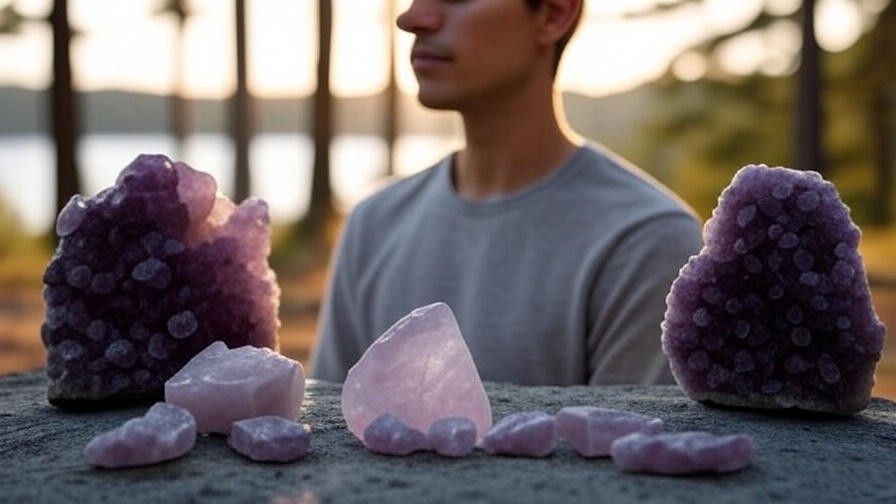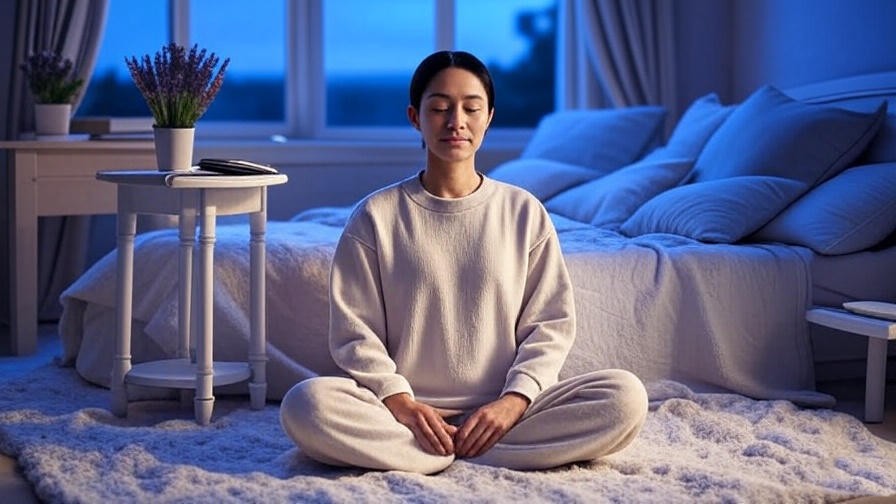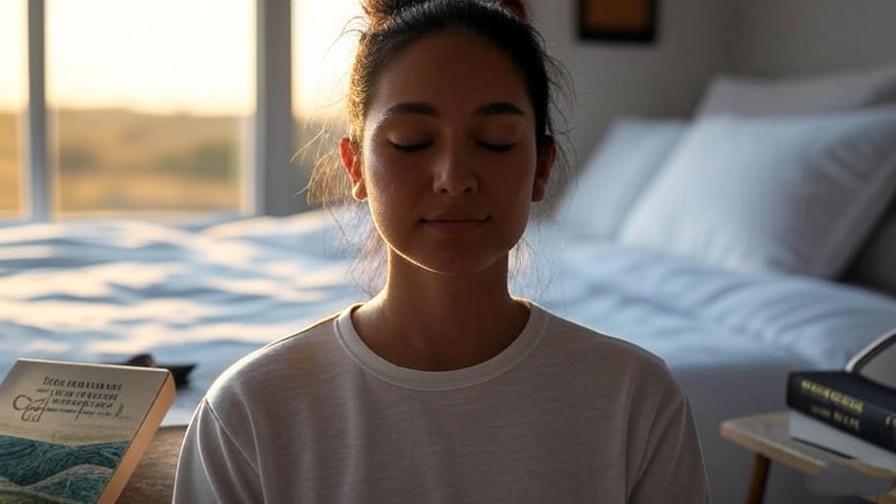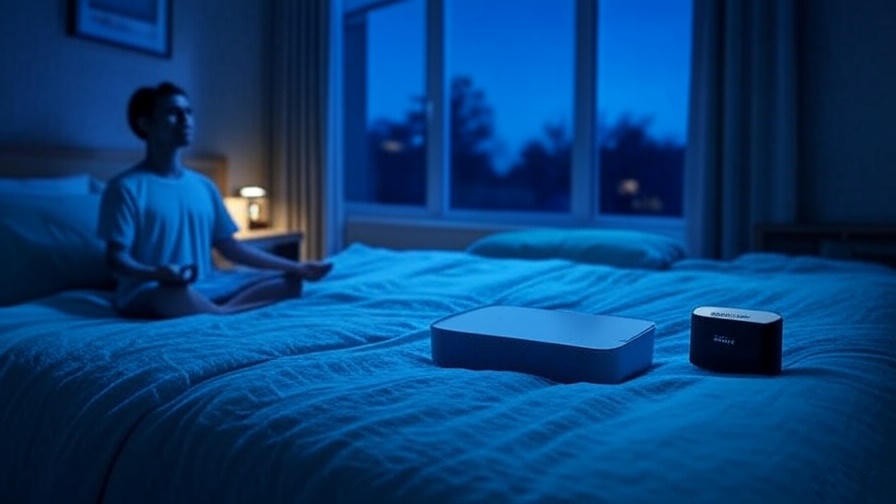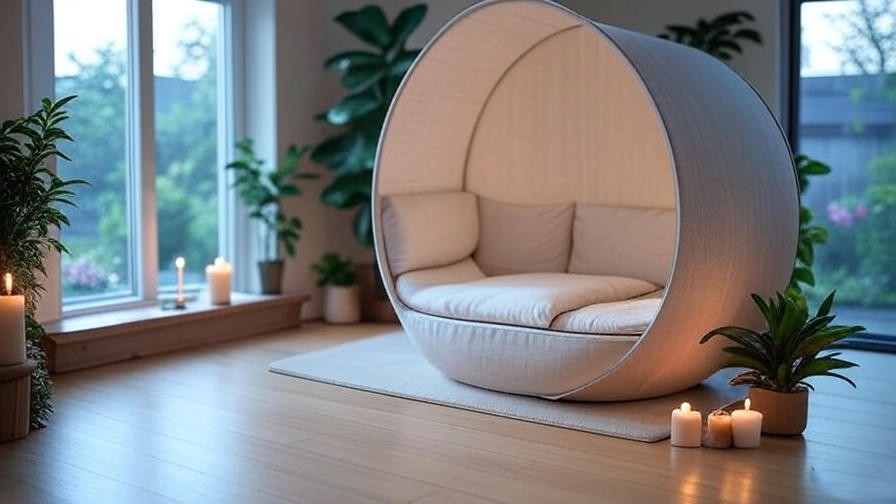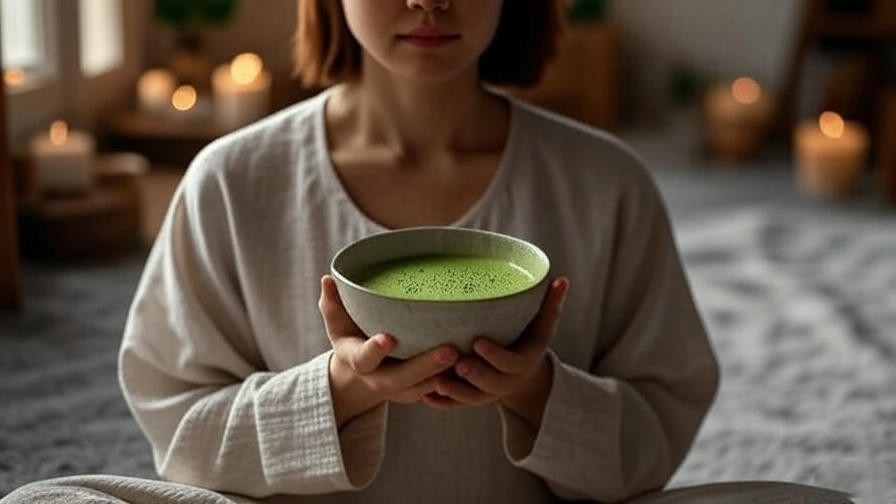Imagine lying in bed, staring at the ceiling, your mind racing with worries that keep sleep just out of reach. Or perhaps you’re yearning for a deeper sense of calm in a world that feels endlessly chaotic. If this sounds familiar, you’re not alone—millions struggle with poor sleep and stress, seeking natural solutions to restore balance. Enter meditation rocks, a simple yet powerful tool to enhance mindfulness, promote restful sleep, and elevate holistic well-being. In this comprehensive guide, we’ll explore how these natural stones can transform your nightly routine and overall wellness. Backed by expert insights, scientific research, and practical tips, this article will empower you to harness meditation rocks for better sleep and a more balanced life.
What Are Meditation Rocks?
Definition and Origins
Meditation rocks are natural stones or crystals used as tactile aids or focal points during mindfulness practices. These stones, often smooth or polished, range from amethyst to obsidian and have been used for centuries in various traditions. In Zen Buddhism, for example, smooth river rocks symbolize simplicity and grounding, while crystal healing practices attribute unique energies to specific stones. Today, meditation rocks are gaining traction in holistic wellness as accessible tools for mindfulness, especially for those seeking better sleep and emotional balance.
Types of Meditation Rocks
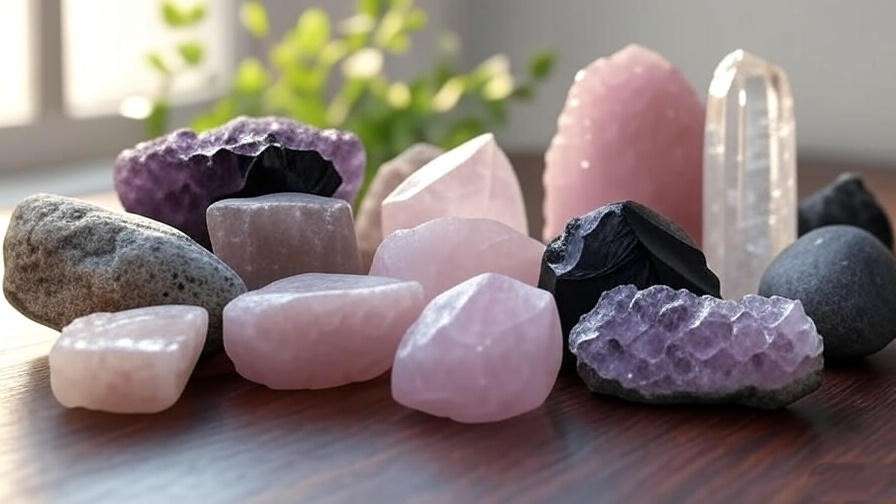
Not all meditation rocks are created equal. Here’s a quick overview of popular options and their properties:
- Amethyst: Known for its calming energy, ideal for reducing anxiety and promoting restful sleep.
- Rose Quartz: Associated with love and emotional healing, great for fostering self-compassion.
- Obsidian: A grounding stone that helps release negative energy, perfect for stress relief.
- Clear Quartz: Amplifies focus and clarity, suitable for deepening meditation.
You can choose between polished stones, which feel smooth and comforting, or raw stones, which retain their natural texture. According to mindfulness expert Dr. Sarah Thompson, “The right meditation rock feels intuitive—it resonates with your energy and enhances your practice.”
Why Meditation Rocks Appeal to Beginners and Experts
Meditation rocks are versatile, affordable, and beginner-friendly. Their tactile nature helps anchor wandering minds, making them ideal for those new to mindfulness. For seasoned practitioners, they add depth to existing routines. By holding or focusing on a rock, users engage their senses, making meditation more accessible and effective. This aligns with the search intent behind meditation rocks: people want practical, tangible tools to improve their mindfulness and sleep quality.
The Science Behind Meditation and Sleep
How Meditation Improves Sleep Quality
Research consistently shows that meditation improves sleep by reducing insomnia, lowering cortisol levels, and promoting relaxation. A 2015 study in the Journal of the American Medical Association found that mindfulness meditation significantly improved sleep quality in adults with insomnia. By calming the sympathetic nervous system, meditation helps shift the body into a restful state, making it easier to fall and stay asleep. For those struggling with racing thoughts at night, meditation offers a proven, drug-free solution.
The Role of Tactile Tools in Meditation
Tactile aids like meditation rocks enhance focus by engaging the sense of touch. Neuroscience research suggests that tactile stimulation activates the prefrontal cortex, which regulates attention and emotional regulation. Holding a smooth stone during meditation can ground you in the present moment, reducing mental chatter. For example, Jane, a 34-year-old teacher, shared, “Using a rose quartz rock during my bedtime meditation helped me stop overthinking and finally sleep through the night.”
Why Meditation Rocks Work
Meditation rocks work by combining sensory engagement with mindfulness principles. The act of holding a stone provides a physical anchor, helping you stay present. Even skeptics of crystal energy can benefit from the placebo effect and the calming ritual of meditation. As Dr. Michael Breus, a sleep specialist, notes, “The power of meditation rocks lies in their ability to make mindfulness tangible, especially for those who struggle with abstract practices.”
How Meditation Rocks Enhance Holistic Well-Being
Stress Reduction and Emotional Balance
Stress is a major barrier to sleep and well-being, but meditation rocks can help. By focusing on the stone’s texture or weight, you anchor your mind, reducing anxiety. Try this 5-minute exercise: Hold your meditation rock, close your eyes, and take slow, deep breaths. Notice the stone’s coolness and shape as you inhale calm and exhale tension. This simple practice, done daily, can lower stress hormones and foster emotional balance.
Connection to Nature
In our tech-driven world, many feel disconnected from nature. Meditation rocks, formed over millennia, offer a tangible link to the earth. This grounding effect aligns with holistic well-being, helping urban dwellers find calm amidst chaos. For example, placing a meditation rock on your bedside table can serve as a reminder to pause and reconnect with nature before sleep.
Spiritual and Emotional Growth
Meditation rocks can also support spiritual growth by aiding intention-setting. For instance, holding an amethyst while visualizing peace can deepen your practice. Holistic wellness coach Lisa Carter explains, “Meditation rocks are like anchors for your intentions—they help you focus on what matters, whether it’s self-love, gratitude, or rest.”
Step-by-Step Guide to Using Meditation Rocks for Better Sleep
Choosing the Right Meditation Rock
Selecting a meditation rock is personal. Consider these factors:
- Size: Small enough to hold comfortably but large enough to feel substantial.
- Texture: Smooth stones are calming; rough stones feel more grounding.
- Material: Choose based on your needs (e.g., amethyst for sleep, obsidian for stress).
- Resonance: Hold the stone—does it feel right for you?
| Rock Type | Properties | Best For |
|---|---|---|
| Amethyst | Calming, soothing | Insomnia, anxiety |
| Rose Quartz | Emotional healing | Self-compassion, stress |
| Obsidian | Grounding, protective | Stress relief, emotional balance |
| Clear Quartz | Clarity, focus | Deepening meditation |
Setting Up Your Meditation Space
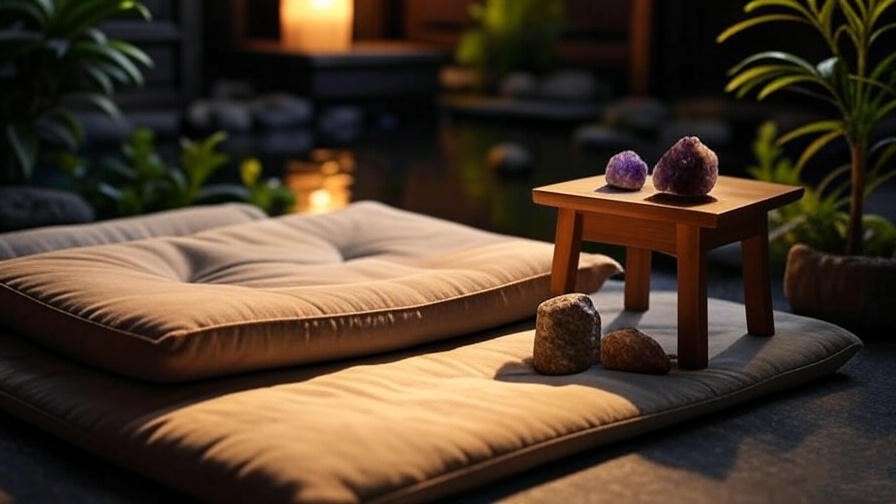
Create a calming environment for your practice:
- Lighting: Use soft, dim lights or candles.
- Sound: Play gentle music or a white noise machine.
- Comfort: Sit or lie on a cozy surface, like a yoga mat or bed.
- Ambiance: Add aromatherapy (e.g., lavender essential oil) for extra relaxation.
A Beginner-Friendly Meditation Rock Routine
Try this 10-minute bedtime routine:
- Find Your Space: Sit or lie in your prepared meditation area.
- Hold Your Rock: Grasp your meditation rock gently in one hand.
- Breathe Deeply: Inhale for 4 counts, hold for 4, exhale for 6.
- Focus on the Rock: Notice its weight, texture, and temperature.
- Release Thoughts: If your mind wanders, gently return to the rock’s sensation.
- Set an Intention: Silently say, “I am calm and ready for restful sleep.”
- End Gradually: Place the rock on your nightstand and ease into sleep.
Downloadable Resource: A visual guide to this routine is available [insert link placeholder].
Advanced Techniques for Deeper Relaxation
For experienced meditators, try these:
- Visualization: Imagine your rock absorbing your stress as you hold it.
- Body Scan: Pair the rock with a body scan, focusing on relaxing each muscle group.
- Mantra Practice: Repeat a calming phrase (e.g., “I am at peace”) while holding the rock.
Sarah, a 45-year-old nurse, shared, “Using an obsidian rock with a body scan meditation helped me overcome chronic insomnia after just two weeks.”
Integrating Meditation Rocks into Your Holistic Lifestyle
Daily Practices for Consistency
To maximize the benefits of meditation rocks, incorporate them into your daily routine. Start with a brief morning practice to set a positive tone for the day. Hold your chosen rock, such as rose quartz, and spend 3–5 minutes focusing on gratitude or a daily intention. In the evening, use the bedtime routine outlined above to wind down. Consistency is key—research from the Journal of Behavioral Medicine shows that regular mindfulness practices, even as short as 10 minutes daily, can significantly improve sleep quality and reduce stress over time. Try setting a reminder on your phone or placing your meditation rock somewhere visible, like your desk or nightstand, to stay committed.
Combining with Other Holistic Practices

Meditation rocks pair beautifully with other wellness practices to amplify their effects. Here are a few synergies:
- Yoga: Hold your meditation rock during savasana (corpse pose) to deepen relaxation. For example, placing an amethyst on your chest can enhance the calming effects of yoga.
- Journaling: After meditating with your rock, journal about your emotions or intentions. This reinforces mindfulness and emotional clarity.
- Gratitude Practice: Pair your rock with a gratitude ritual. Hold it while listing three things you’re thankful for each day, boosting positivity and well-being.
Tip: Try this affirmation while holding your rock: “I am grounded, peaceful, and open to healing.” This combines tactile focus with positive self-talk, aligning with holistic principles.
Building a Long-Term Habit
Sustaining a meditation practice requires intention and patience. To build a lasting habit:
- Start Small: Begin with 5-minute sessions and gradually increase duration.
- Track Progress: Use a journal or app to log your meditation sessions and note improvements in sleep or mood.
- Join a Community: Engage with online mindfulness groups or local wellness workshops to stay motivated. Many communities on platforms like X share tips on using meditation rocks effectively.
Sleep specialist Dr. Emily Chen advises, “Habits form through repetition and positive reinforcement. Pair your meditation rock practice with an existing routine, like brushing your teeth, to make it stick.”
Common Mistakes to Avoid When Using Meditation Rocks
Choosing the Wrong Rock
A common pitfall is selecting a meditation rock based solely on appearance. While aesthetics matter, the stone should resonate with your needs. For example, if you’re seeking better sleep, opt for calming stones like amethyst rather than energizing ones like citrine. To test resonance, hold the rock for a minute—does it feel comforting or grounding? If not, try another. Visiting a local crystal shop or wellness store can help you choose intuitively.
Inconsistent Practice
Sporadic meditation won’t yield lasting results. A 2020 study in Sleep Medicine Reviews found that consistent mindfulness practice (at least 5 days a week) is critical for sustained sleep improvements. To avoid inconsistency, set a specific time for your practice, such as 10 minutes before bed. If you miss a day, don’t stress—simply resume the next day. Using a habit-tracking app or placing your rock on your pillow can serve as a reminder.
Misaligned Expectations
Meditation rocks are powerful tools, but they’re not a quick fix. Some expect instant results, but mindfulness is a skill that develops over time. Dr. Thompson notes, “Patience is essential. Meditation rocks amplify your practice, but the real transformation comes from consistent effort.” Focus on the process—small improvements in relaxation or sleep quality—rather than expecting overnight miracles.
FAQs About Meditation Rocks
Do meditation rocks really work for sleep?
Yes, meditation rocks can enhance sleep by anchoring mindfulness practices that reduce stress and promote relaxation. A 2018 study in Frontiers in Psychology found that tactile mindfulness tools improve focus and emotional regulation, indirectly supporting better sleep. User testimonials, like Jane’s story above, also highlight their effectiveness.
How do I clean and care for my meditation rocks?
Clean your rocks gently with lukewarm water and a soft cloth to remove dust or oils. For energetic cleansing, place them under moonlight or in a bowl of salt overnight (avoid water for soft stones like selenite). Store them in a soft pouch to prevent scratches.
Can beginners use meditation rocks effectively?
Absolutely! Meditation rocks are ideal for beginners because their tactile nature simplifies focus. Start with the beginner routine above and practice patience. Even 5 minutes daily can yield noticeable benefits within weeks.
Are there specific rocks for specific needs (e.g., anxiety, insomnia)?
Yes, certain rocks align with specific goals:
- Anxiety: Amethyst or blue lace agate for calming energy.
- Insomnia: Moonstone or lepidolite to promote restful sleep.
- Stress: Black tourmaline or obsidian for grounding.
Consult a crystal guide or test stones to find what works for you.
Expert Insights and Real-Life Success Stories
What Experts Say About Meditation Rocks
Experts in mindfulness and sleep science endorse meditation rocks as effective tools. Dr. Michael Breus, a board-certified sleep specialist, explains, “Tactile aids like meditation rocks can bridge the gap between abstract mindfulness and practical application, especially for those who find meditation challenging.” The National Sleep Foundation also highlights mindfulness as a top non-pharmacological approach to better sleep, with tools like rocks enhancing accessibility.
Success Stories

- Mark, 38, Software Engineer: “I was skeptical about meditation rocks, but using a clear quartz during a 10-minute bedtime routine helped me fall asleep faster. After a month, I noticed less anxiety and better focus at work.”
- Lila, 52, Retiree: “Amethyst became my go-to for meditation. It’s like a physical reminder to let go of stress. My sleep tracker shows I’m getting an extra hour of deep sleep now.”
- Priya, 29, Parent: “As a new mom, I was exhausted and stressed. Holding a rose quartz while meditating helped me feel grounded, and I now sleep soundly despite my hectic schedule.”
Conclusion
Meditation rocks are more than just stones—they’re powerful allies in your journey toward better sleep and holistic well-being. By anchoring mindfulness practices, reducing stress, and fostering a connection to nature, these simple tools offer transformative benefits. Whether you’re a beginner or a seasoned meditator, the steps and insights in this guide can help you integrate meditation rocks into your life for lasting results. Try the bedtime routine tonight, share your experience in the comments, or download our free “Meditation Rock Bedtime Guide” [insert link placeholder] for more tips. Ready to transform your sleep and well-being? Let meditation rocks lead the way.

